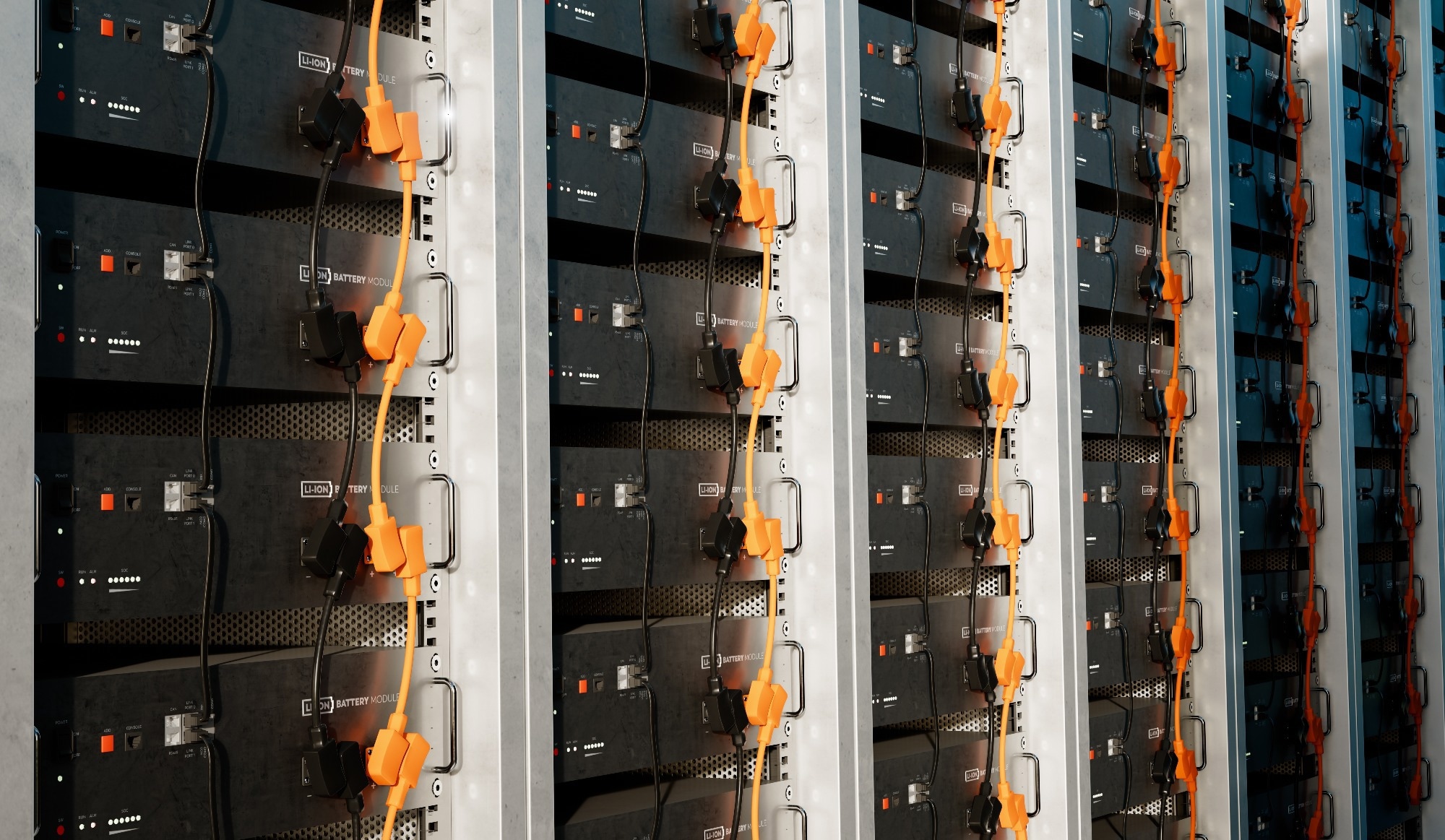In a recent article published in Advanced Powder Materials, researchers presented a novel one-step stretching technique to enhance the energy storage capabilities of BaTiO3/poly(vinylidene fluoride) (PVDF) nanocomposites. The study aims to optimize PVDF crystallization and BaTiO3 nanowire orientation, significantly improving energy density and efficiency.

Image Credit: petrmalinak/Shutterstock.com
Background
The performance of dielectric materials is often constrained by their dielectric loss and breakdown strength. Traditional linear dielectrics have energy densities that fall short of the potential found in ferroelectric polymers. Ferroelectric materials, with their ability to undergo phase transitions under mechanical stress, offer a way to enhance energy storage properties.
Previous research has shown that stretching ferroelectric polymers improves their mechanical and electrical properties, increasing energy density. This study builds on these findings by investigating the effects of uniaxial stretching on the properties of BaTiO3/PVDF nanocomposites, focusing on the relationship between stretch ratio, dielectric performance, and energy storage capabilities.
The Current Study
The BaTiO3/PVDF nanocomposite films were created using a two-step process. First, BaTiO3nanowires were synthesized through a hydrothermal method, where barium and titanium precursors were mixed in a solution and exposed to controlled temperature and pressure conditions. After synthesis, the nanowires underwent surface modification to improve their compatibility with the PVDF matrix.
PVDF was dissolved in N,N-dimethylformamide (DMF) to create a homogeneous solution. The prepared BaTiO3 nanowires were then added to the PVDF solution, ensuring uniform dispersion through vigorous stirring. The mixture was cast onto a glass substrate and evaporated, forming a thin film.
To achieve the desired mechanical properties, the films were subjected to uniaxial stretching at varying ratios (R = 1 to 5). The stretching process was performed at a controlled temperature to facilitate the alignment of the nanowires and promote crystallization of the PVDF matrix.
Characterization of the films involved measuring dielectric properties, analyzing breakdown strength, and calculating energy density based on electric displacement-electric field (D-E) hysteresis loops. Mechanical properties were evaluated through nanoindentation tests to determine Young's modulus.
Results and Discussion
The results showed that the stretching process significantly impacted the dielectric properties and energy storage capabilities of the BaTiO3/PVDF nanocomposites. As the stretch ratio increased, both ferroelectric and conduction losses displayed a non-linear relationship with the applied electric field.
At the highest stretch ratio (R = 5), the ferroelectric loss stabilized at around 25 %, while the conduction loss remained near 10 % beyond an electric field of 600 kV/mm. This suggests that the stretched nanocomposite maintained efficient energy storage with minimal losses.
The electric breakdown strength of the nanocomposites also improved with an increased stretch ratio. For the R = 5 nanocomposite, the breakdown strength reached 827 kV/mm, a significant improvement compared to 489 kV/mm in the unstretched sample.
This improvement is attributed to the increased Young's modulus resulting from the stretching process, which allows the material to better withstand the mechanical stresses induced by the electric field. The enhanced mechanical properties reduce the likelihood of breakdown, improving the overall reliability of the nanocomposite for energy storage applications.
The stretched BaTiO3/PVDF nanocomposite achieved a remarkable energy density, reaching 38.3 J/cm³ for single-layer films and 40.9 J/cm³ for optimized sandwich-structured films, significantly surpassing traditional linear dielectrics. This highlights the potential of this method for developing advanced energy storage materials.
The study also explored the orientation of BaTiO3 nanowires within the PVDF matrix, showing that the stretching process promoted a more favorable in-plane orientation. This orientation further enhances dielectric properties by reducing electric field concentration and improving charge distribution.
The findings underscore the importance of mechanical processing in tailoring the properties of polymer-based nanocomposites. The synergistic effects of mechanical stretching on both the crystallization of PVDF and the orientation of BaTiO3 nanowires contribute to the observed enhancements in energy density and efficiency. This research provides valuable insights into the design of high-performance dielectric materials for energy storage applications.
Conclusion
This study successfully demonstrates a novel one-step stretching approach to enhance the energy storage capabilities of BaTiO3/PVDF nanocomposites. By optimizing the crystallization behavior of PVDF and the orientation of BaTiO3 nanowires, the researchers achieved significant improvements in dielectric properties, breakdown strength, and energy density.
The findings highlight the critical role of mechanical processing in developing advanced polymer-based nanocomposites, paving the way for future research to optimize energy storage materials for a wide range of applications.
This study not only deepens the understanding of the relationship between mechanical properties and dielectric performance but also opens new possibilities for designing high-efficiency energy storage systems.
Journal Reference
Guo, R., et al. (2024). A novel facile one-step stretching approach for achieving ultrahigh energy density of BaTiO3/PVDF nanocomposites. Advanced Powder Materials. DOI: 10.1016/j.apmate.2024.100212, https://www.sciencedirect.com/science/article/pii/S2772834X24000435